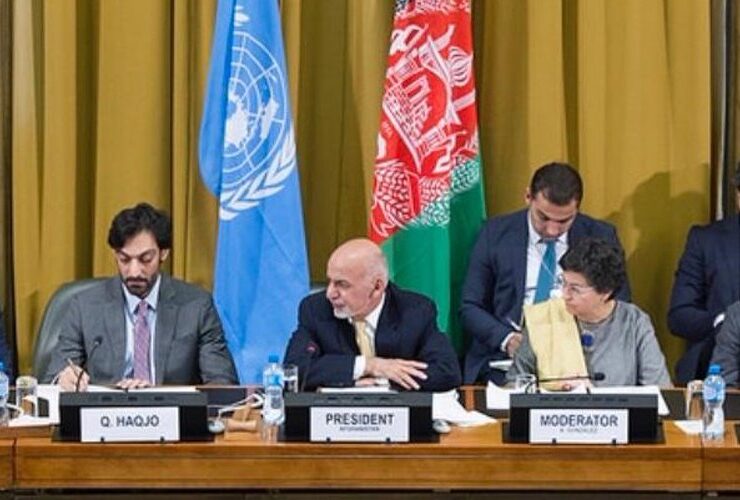By Fatima Airan, Writer at BusinessDNA, Senior Specialist at the Ministry of Finance of Afghanistan
The Afghan publishing sector:
A history The arrival of the first printing press in Afghanistan can be traced back to 1873 during Amir Sher Ali Khan’s reign, when Syed Jamaluddin Afghan requested a lithography printing press from India. This kickstarted the publication of several periodicals and newspapers during the following years. The independent media sector launched during the late 1940s but was solely limited to newspapers. The experiment ended in 1953 when Mohammed Daoud Khan became prime minister and ordered the closure of independent newspapers. The 1964 Constitution of Afghanistan and the Press Law of 1965 would reverse the silencing process, with the insistence on providing freedom for the press, but within the boundaries of safeguarding the interest of the state including the monarchy, Islam, and public order. This period of relative freedom ended when Mohammed Daoud led a coup that toppled the country’s monarchical system. Subsequently, for three decades, independent media came under severe restrictions. During this period, mainly state-written textbooks and regulatory publications were available.

From the start of the civil war in 1978 till the Taliban regime, almost all bookstores and publications were banned, except for two state[1]owned newspapers, Anis and Hiwaad. During the Taliban rule, besides Anis and Hiwaad, Aazem and Amiri Publications survived which served solely as bookstores but did not enter the printing business in Afghanistan until 2001.
The Book Boom:
Following the American invasion in 2001, the country saw a widespread emergence of private publishing companies. According to the Ministry of Information and Culture, there are approximately 100 private publishing houses registered in Afghanistan. Since the “book boom”, companies have been able to publish thousands of titles on an array of topics by Afghan writers. Simultaneously, publishing houses have been successful in the sales of foreign publications and bestsellers, which are then translated into Dari and Pashto. Afghanistan PEN, a branch of PEN International, publishes books in other local languages such as Turkmen, Balochi, and Pashayi. Afghanistan’s publishing industry has also received international acclaim, having been recognized in 2008 as one of the countries with the top publishing sectors amongst regional countries.
Kabul’s leading publishers state that more than 50% of their customers are university students who purchase books for their classes. The remaining customers are readers who primarily consume the works of literature, politics, psychology, and autobiographies. With such popularity in the publishing sector, authors are now provided a royalty for their published works, when only a few decades ago, authors were emptying their pockets to see a physical version of their stories.
The Author’s Role:

One of the most significant achievements of the past 19 years is the number of new titles written by Afghan authors and published by Afghan publishers. Afghan writers have presented new works for their readers ranging from poetry to science fiction. Like the internet’s impact, the publishing sector has opened infinite doors for Afghans following the new millennium. Despite the significant contributions made by authors, the return they receive from publishing a book is insignificant. An Afghan writer can hardly produce another book with the money received from the first set of royalties. Royalties paid by publishing companies are a secondary source of income. According to Wasim Amiri, a publisher based in Kabul, prominent Afghan writers like late Rahnaward Zaryab have published more than 20 books, but have yet to see any stable income from the success of their published works. Publishers based in Kabul acknowledge the lack of government support as a challenge. “Rahnaward Zaryab had received considerable attention from foreign governments. He received the Jalal-ul-Ahmar Award from the Government of Iran, but no appreciation was designated from the Government of Afghanistan. Ali Amiri, author of Khwab-o-Kherad (Sleep and Wisdom) and Kherad-e-Awaara (Diaspora’s Wisdom) has received countless accolades for his writings, notably most recently from Oxford University, but nothing from the government,” Amiri said. Amid the political instability and protracted violence, literature and art have fallen through the cracks. According to Amiri, the government’s budget for the procurement of books and the support of the industry is not enough to sustain both the authors and the publishing sector. “The government allocates 2 million Afghanis to purchase books for public libraries. It’s just not sustainable.”
Challenges of the publishing sector:

Until 2014, the publishing sector had been witnessing an unprecedented level of growth, with readers consuming and demanding new books at a rapid pace. Whereas in the last 5 years, an increasing number of books have been left on store shelves and regular customers have been disappearing due to security concerns and economic instability.
Exacerbating the issue is the lack of oversight regarding copyright laws in Afghanistan. Although stringent regulations are set in place, publishers often find that the legal process of protecting intellectual property hits a dead end. With duplications and PDF copies available across social media circles, publishing houses and authors experience first[1]hand the ramifications of a lost market. “When we published Dr. Ispanta’s book, Afghan Politics: Spanta`s Memoirs, we were expecting to sell more than 10,000 copies. But after three days, the book was scanned and made available through PDF. We were not able to sell even 1000 copies.”
Aazem Publication’s Managing Director, Iqbal Aazem shares similar frustrations, stating, “When we publish a book, pirated versions are either printed inside the country or imported from Pakistan and enter the market at a lower price. Without the proper implementation of the copyright regulations, the situation of authors, as well as publishers, will never improve. Publishing is nothing without intellectual protections.”
Another regulatory concern faced by publishers is the taxes levied by the government. Imported printing paper, every book sold and their publishing factories are all privy to some sort of tax. Shir Ahmad Saeedy from Saeed Publications stated: “We primarily import papers from China and Indonesia. Due to the distance, the cost of shipping is high. We pay taxes once the papers are imported, then when the books are published and sold. Considering this, a book is sold at a higher price than it normally would be. If the government lowers taxes and offers subsidies for the publishing industry, books can be sold at a lower price. This will encourage people to buy more and read more, which help the industry grow. In all their endeavors, private publishers have not received any support from the government.
Impact of digitization on the book publishing industry:
Although a large-scale move has been led by readers who have shifted from hardcover reads to digital e-books, Afghan publishers believe physical copies of books will continue to be the preferential choice of readers in Afghanistan. University students, who comprise almost 50% of the sector’s regular customers, continue to use hard copies. Saeedy states that, “Digitalization depends on how many people have internet access. The high cost of internet has affected the ability of readers to use digital versions. If publishers invest their time in converting hard copies to soft, they would not make enough profit.”
The publishing business during COVID-19:
Similar to every other industry, COVID-19 has heavily impacted the publishing sector. Due to the shutdown of physical bookstores and markets, profits were cut in half during the lockdown. For some of the publishing houses who are new to the market, and already struggling to make ends meet, COVID-19 impacted them significantly worse than their well-established competitor.
The publishing business during COVID-19 Similar to every other industry, COVID-19 has heavily impacted the publishing sector. Due to the shutdown of physical bookstores and markets, profits were cut in half during the lockdown. For some of the publishing houses who are new to the market, and already struggling to make ends meet, COVID-19 impacted them significantly worse than their well-established competitor and sold out its entire first batch of printed copies.
Breaking into the publishing industry:

Established publishers define the industry as a way of reflecting their passion and love for sharing original stories and ideas. Saeedy states that, “the industry is more of an art than a business. Someone who is passionate about books, the arts, and culture should enter the realm of publishing. The industry is at the intersection of culture and commerce. The purpose is to make money while cultivating and protecting our culture.” When asked about how to take the initial steps of launching one’s career in the industry? “Start with a bookstore. They should run it for five to six years to study the market and learn new methods. Besides, the industry requires honesty and commitment. A publisher should be well aware of copyright law and publishing.”
Aazem Publications:
Dr. Ajmal Aazem launched his publishing enterprise, Aazem Publications, 25 years ago when he was a student at the Faculty of Medicine at Kabul University. Aazem Publications is the first private publishing company in Afghanistan. The company started when Dr. Aazem began handwriting pages out of textbooks, sharing copies with his classmates Since the launch of the company, Aazem Publications has been able to publish thousands of titles. In a year, 200 to 400 new books are published. Dr. Aazem states that if copyright laws are properly implemented, the publishing industry will flourish.
Amiri Publications:
30 years ago, a bookstore opened its doors to customers and established itself as the one-stop-shop for the most important and pressing titles of the day. That passion and dedication would lead to the publishing house, Amiri Publications. Sufi Amer Khan, Wasim Amiri’s grandfather was the inspiration behind Amiri Publications’ name. The company is well known for having a reservoir of old books written and published during the mid-20th century. More than 600 titles written by Afghan authors have been published during the past 19 years. Amiri believes that for the industry to meet its peak, government support is required. The taxes levied on the industry constrains its ability to publish a wide array of new works and explore new areas of readership for consumers
Saeed Publications:
With 1400 titles published under its name, Saeed Publications is focused heavily on providing Afghan readers with a broad scope of titles and subjects at an unprecedented level. Novels and psychology texts are highly-preferred among their customers. Saeedy is optimistic about the future and believes that novels and books on psychology have the power to turn Afghanistan into a dynamic society. He also points out that the condition of the industry directly depends on the security situation in the country. Copyright is another concern faced by Saeed Publications; finding their published works circulated heavily in the informal market or pop-up bookstores has been a frequent concern for the company.
Wazha Publications:
Ali Sadiqi and Qasim Farzam launched their bookstore in 2015, slowly transitioning into a publishing house as they gained experience in the industry. Although Wazha Publications is relatively new to publishing and its competing environment, the partners have been able to publish upwards of 80 titles and have printed approximately 1,000,000 copies for other publishing companies. Farzam mentions that the diversity of books available in the market for readers has increased and is one of the primary reasons behind the sudden popularity and interest in the culture of reading in Afghanistan. 25 employees currently work for Wazha Publications. With improved security, the founders hope to expand their business, publish more books and hire up to 100 additional employees








